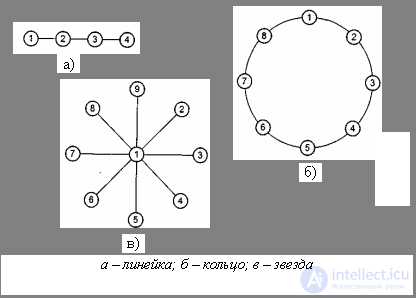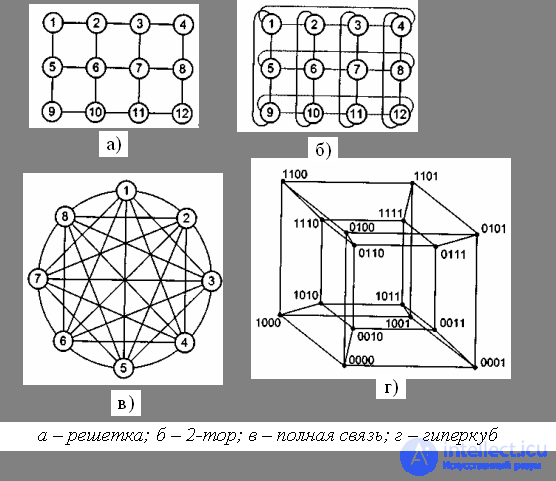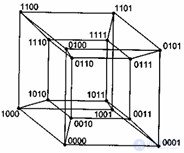Lecture
Topological links of aircraft modules
The choice of the connection topology of processors in a particular computing system may be due to a variety of reasons. These may be considerations of cost, technological feasibility, ease of assembly and programming, reliability, minimality of the average path length between nodes, minimality of the maximum distance between nodes, etc.

Variants of connection topologies of processors and VM NUMA Non Uniform Memory Access

Binary hypercube topology

In the n-dimensional space at the vertices of the unit n-dimensional cube, the processors of the system are located, that is, points (x 1, x 2, ..., x n) in which all coordinates x i can be equal to either 0 or 1. Each connect the processor to the nearest immediate neighbor along each of the n dimensions. The result is an n-dimensional cube for a system of N = 2 n processors. The two-dimensional cube corresponds to a simple square, and the four-dimensional version is conventionally shown in the figure. In a hypercube, each processor is associated only with log 2 N immediate neighbors, and not with N, as in the case of complete connectivity. Hypercube has a lot of useful properties. For example, for each processor it is very simple to determine all its neighbors: they differ from it only in the value of any one x i coordinate. Each "face" of an n-dimensional hypercube is a hypercube of dimension n-1. The maximum distance between the vertices of the n-dimensional hypercube is n. A hypercube is symmetrical with respect to its nodes: from each node the system looks the same and there are no nodes that require special processing.
Comments
To leave a comment
Highly loaded projects. Theory of parallel computing. Supercomputers. Distributed systems
Terms: Highly loaded projects. Theory of parallel computing. Supercomputers. Distributed systems